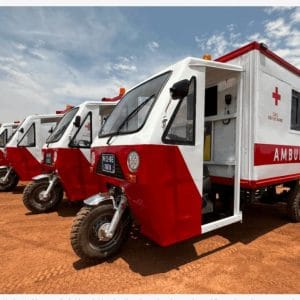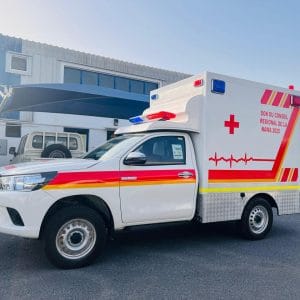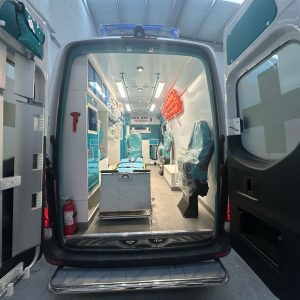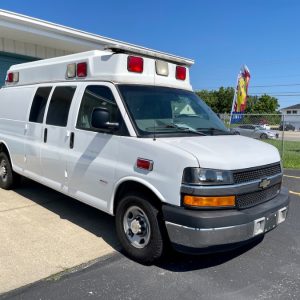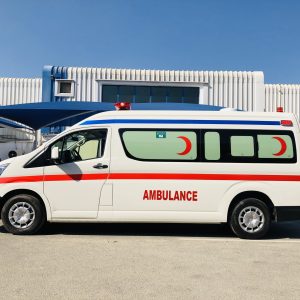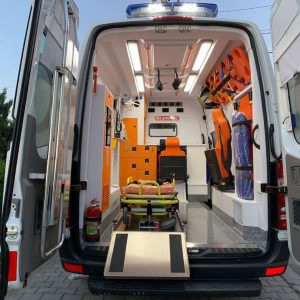1. Introduction
Mobile maternity clinics are on the rise. From rural Western India to Second Avenue in New York City, these clinics aspire to provide round-the-clock obstetric care using vehicles custom-outfitted with a suite of medical equipment. They cater to a wide range of users, from low-income patients who struggle to access high-quality hospital care to privileged couples who desire a more personalized approach to childbirth. With the proliferation of mobile clinics in recent years, a question arises – how should we evaluate the impact of this strategy to provide a complex healthcare service for extremely diverse populations in nearly as many geographical backdrops? In this review, the authors highlight the impact of mobile maternity clinics and deliberate on its potential implementation, indicating the high level of patient satisfaction and increasing use of facilities. The maternal and perinatal outcomes are optimal and can be improved by better transportation mechanisms to the hospitals.
In the following text, the authors highlight one of the potential solutions that has been tested specifically for providing obstetric care to populations with low access and high risk of adverse outcomes – the mobile maternity clinic (MMC). This introduction provides a brief summation of the rest of the paper. In subsequent sections, the authors will describe the impact of models of mobile maternity clinics, the specific needs, approaches, and potential implementation options. They will also discuss transportation of patients from MMCs to hospitals for emergency procedures, the achievements and potential downfalls of MMCs. Finally, the authors review a decision analysis approach to determine the best course of action for investing in MMCs.
1.1. Background and Rationale
Mobile maternity clinics are not a new nor a unique concept, yet they have been historically infrequent in development and use. Therefore, the availability of research and literature around these mobile home birthing clinics can be scarce. The few publications available appear almost exclusively in the fields of nursing and medicine, since much of the development of mobile home birthing clinics has been to facilitate mother-led and non-permanent birthing enclaves. The first recorded instances of using a mobile unit for a travelling maternity clinic occurred in the 1920s during the first Labour government. The Department of Health mobilized a maternity clinic in the Thames Valley area of the Waikato, and a making-maternity information service was begun for milk bar mothers alongside the Health For The Family scheme. One other known usage in New Zealand was a brief operation in Wellington City County in 1946.
A variety of rationales underlie the development and use of mobile maternity clinics. The two main categories that capture motivations typically cited in the literature are economic and/or sociopolitical. Border differences in aspects of midwifery are the prime motivator for creating an anthropological resource dealing with mobile maternity clinics. Additionally, the development of maternity clinics and midwifery services can give insight into a respective country’s attitudes to and relationship with home birthing, home birthing education, and the concept of place.
1.2. Definition of Mobile Maternity Clinics
A mobile maternity clinic incorporates resources from the field of midwifery care, or it offers possibilities to access resources for medical obstetrical care. These are often transport trailers or buses in which medical examinations can be conducted, and minor interventions can be carried out. Sometimes they provide shared care in which a doctor or midwife also has time in the same vehicle or site to attend to prenatal care needs. They are staffed by a variety of professionals who are part of the care of a pregnant woman and her child, particularly in the labor and soon after delivery period. They may be a stand-alone operation or be part of an association with either a hospital or birth center or a combination of those services.
It is normal to define maternity centers in a variety of different ways. If we look around the world at how birth is done, and how women are taken care of through pregnancy, you will find an excellent description of the limits of maternity care. Most use a description of where birth takes place to name the situation: homebirth, birth center birth, or hospital birth. They all relate to place of birth. But birth is only one small aspect of pregnancy and maternity care. Most pregnancies run to term and occur without a problem. A maternity center is a place where whole person centered care can be offered for all people at any time during their maternity. They usually offer opportunities to initiate healthy lifestyle, address potential complications, and then follow and adapt care as the woman approaches birth and moves on into motherhood. They all offer care in hospitals and clinics as well as in the home or a birth center. It is really important to remember the normality of pregnancy when we start talking of maternity care.
2. Benefits of Mobile Maternity Clinics
Need for Prenatal Care Access
Preventive measures play a significant role in the management of any disease, and this holds true in the field of maternal healthcare as well. Timely initiation and regular check-ups during pregnancy are essential in order to spot complications such as hypertension, gestational diabetes mellitus, anemia, and other complications. In addition, a formal birth preparedness and complication readiness plan can be made with the woman during the antenatal period. It is essential for healthcare services to provide universal access to quality prenatal care in order to reduce pregnancy-related complications, stillbirths, and early neonatal mortality rates. The majority of the time, the place and mode of delivery is chosen by the woman. However, some expectant mothers in lower- and middle-income countries opt to deliver at home in unsafe environments. Multiple factors lead to the choice of refusing delivery at a health institution, one of which is the physical distance between the residence and the health institution. In rural areas, this gap can be effectively bridged by a mobile clinic.
Reduction in Maternal and Infant Mortality Rates
According to the United Nations, approximately 3.9 million neonatal deaths and 2.6 million stillbirths occur every year, of which about 98% occurred in low- and middle-income countries in the year 2000. Access to prenatal, obstetric, and neonatal health services is restricted for women from geographically remote areas of the globe. Because a mobile clinic travels to a predefined location on a well-planned route, it is a good approach for solving such problems. Some of the ways in which mobile maternity clinic services can be provided include establishing labor rooms at taller levels at the community level; providing ambulance services to transport pregnant mothers from home to the hospital; providing child immunization services; providing early childhood care services; conducting counseling on health, nutrition, family planning, and births; providing screening services for mothers and children; and conducting training for health workers. Mobile maternity clinics are established as part of general health service programs, in the form of specialist clinics to reduce maternal and infant morbidity and mortality. In this way, it might be possible to meet the basic health care needs of pregnant and post-partum women. Although in rural areas, these services can play a significant role in reducing maternal and infant mortality, a lack of information on their reachability has caused uneasiness in regard to their utility. Currently, there is a need for additional studies to fill this gap.
2.1. Increased Access to Prenatal Care
Mobile Maternity Clinics (MMC) signal many positive additions to addressing the impact of decreased access to prenatal care for rural areas of the United States. Women who live in rural areas are known to be negatively affected by limited access to appropriate prenatal care. Increased access to prenatal care is specifically important, as research shows an increase in positive healthcare outcomes for mothers and babies directly correlated with access to and engagement in prenatal care services. MMCs operate in rural areas that may not have convenient access to services of a larger center due to transportation or other access barriers.
A new study by researchers at Baylor University has concluded that these services are associated with improved birth statistics and added health benefits for both the mother and child. This comes as good news after recent closures of rural hospitals and/or labor and delivery units that have prevented many expectant families from accessing services. Generally, prenatal care identifies early pregnancy problems so that treatment can begin. Prenatal checkups also involve changes in the mother’s health; premature birth, if monitored by an obstetrician, can often be prevented with hospital bed rest and possible training in neonatal units at larger centers. Overall, prenatal care may decrease the terrifying disability associated with the NICU and pre-term birth in low-resource rural areas. This lower side can change the value of the meaning of having a neonatal unit hundreds of miles from our low-resource Stone Age towns.
2.2. Reduction in Maternal and Infant Mortality Rates
Reduction in maternal and infant mortality rates. Maternal and infant mortality affects the most vulnerable in society. Timely interventions during childbirth can make a huge difference to outcomes for mothers and infants. Complications and emergencies occur without warning, and women may not reach healthcare facilities in time to receive the care they need. This is particularly the case for those in rural, remote, or conflict-affected areas. This is one of the significant challenges for those seeking to address the gap in maternal and infant mortality rates. Mobile maternity clinics focus on reaching the unreachable, addressing the healthcare deficit in areas where women and infants are most at risk of preventable death.
Over time, the establishment of mobile maternal healthcare services, targeted to those most in need, could lead to a significant increase in the number of women attending antenatal care, the number delivering in a healthcare facility, and the number of postnatal visits. The follow-on effect of this being fewer women and babies dying due to preventable causes. Mobile health services also have the potential to reduce barriers that women underlying the factors deter them from using health services, such as financial cost or geographical distances of roads and the health facilities they are directed to go when needed health services. Consequently, extraordinarily beneficial results related to the decrease of birth at home and the increase of skilled and birth by cesarean section attributed to meaningful lower rates of maternal and neonate mortality and complications during labor and delivery support system wearing well.
3. Challenges and Solutions
Setting up mobile maternity clinics may pose logistical challenges. First, some women may be unable to attend the clinic for fear that they will be seen by others. Keeping the clinic’s schedule private and frequently changing the schedule to avoid any patterns may help to overcome this issue. Other women may face social pressure, particularly from in-laws, to complete household tasks instead of attending the clinic. On the other hand, if they are given some food at the clinic, there may be a greater incentive for women to attend. When women do attend, some may be turned away because the clinic staff is overwhelmed. In some settings, the number of women who can be seen may be limited by the quantity of diagnostic chemicals for pregnancy tests and prenatal vitamins that can be taken along, among other things. If this equipment and medication are limited, then it is preferable to reserve them for women who are already pregnant and in need of prenatal vitamins, although a woman who is thought to be pregnant should also receive a small food supplement which will not harm her if she is not pregnant. Although there may be pregnant women who need prenatal vitamins who go away empty-handed, it is expected that this resource will be used wisely and that the majority of good will be achieved.
These issues have the potential to pose significant challenges to providing quality health care to women via mobile clinics. At the same time, technological innovations may provide solutions to these issues. For example, mobile technology-based solutions could encrypt and keep the mobile clinics’ schedule private. They could also encrypt special timed one-time login/user/password combo to check in the women when they arrive at the clinic, and this could be combined with drop-in appointment times so they can come inside without scheduling via the system. Statistics about the number of women who are expected to come to the clinic on that day could be shared with any potential donor or policymakers by automated reports from the same system that supports the clinic work, which would allow more targeted and useful donations.
3.1. Logistical Challenges
There are numerous difficulties involved in operationalizing these services. One of the most apparent difficulties is the transport of the mobile clinic itself, as it is important that sufficient resources be carried. Some services could be provided if it were more practicable and cost-effective to transport on a smaller truck, but these would clearly be restricted in comparison to what is currently available in larger vehicles. Linked to this problem is another logistic difficulty: personnel. There is a need for someone qualified to drive and manage the vehicles safely. There is also a need for a trained, professional doctor.
The working schedules logistically involved in providing this service are extensive and complicated, raising a number of problems. The vehicles structurally need to be bought and staffed, with personnel delivering the service to use a holding organization which is under a separate contract from those providing the vehicle. Furthermore, the working schedules for the drivers and the professionals are quite distinct. For instance, drivers in Ireland often drive shift schedules from 6am to 6pm and from 6pm to 6am, while healthcare workers may be scheduled for 8am to 6pm, Monday to Friday. The effective amalgamation of such complex working schedules would be another of the more demanding qualification tasks pertinent to the operations of the mobile maternity clinics.
3.2. Technological Solutions
Technological solutions have worked in overcoming some of the challenges in provision of access to and ensuring a proper quality of care through mobile clinics. Many technological solutions that have been in use for mobile maternity clinics are aimed at overcoming the geographic isolation of these clinics, as well as demonstrating the impact of the implemented programs. They utilized different geocoders to map the locations from one study to another; snowball methods to list key websites, organizational reports and other resource materials (through web search); the author’s expert knowledge; Google, PubMed and Cochrane Library searches using key words relating to ‘economic evaluation’, ‘costs’, ‘technology solutions’, and ‘evidence based practice’.
Reported in the World Bank report, “Health conditions in the areas of operation of the subproject villages are very dismal. The primary challenges are seasonal floods, waterborne diseases, lack of access to basic healthcare, poor hygiene and sanitation, illiteracy, leading to infant deaths, high incidence of malnutrition, anemic women, unsafe delivery and related complications, need for urgent immunization and a host of issues requiring urgent attention at the household level where such population lives”. The use of mobile maternity clinics as a part of the solution to overcome healthcare challenges at the community level in least access area. Technological solutions that enhance mobile maternity clinics play an important role in tracking patients, monitoring the fetus and predicting adverse complications. Tracking patients plays a major role in thorough follow-up and helps predict any risk factors that could occur during the pregnancy up to childbirth. Mobile ultrasound is used to map out the fetal development and allows follow-up at the community level. The use of combined pregnancy card chips is applicable to determine fetal development, socio-demography, symbolic setting, time date.
4. Case Studies
Chapters 4 and 5 present the evidence for the impact and operationalization of mobile maternity clinics in practice. This is our most important contribution, as a systematic review of the evidence showed there had been little published research on this area. While the anecdotal evidence about the success of such schemes is remarkable, more systematic research done anywhere in the world would be welcome, especially to examine the potential for achieving cost-effectiveness.
This chapter presents two case studies that examine the impact and implementation of mobile maternity clinics in practice. The first case study looks at the impact of mobile medical units (MMU) in remote areas of India, to analyze whether the clinics increase maternal health care utilization over time. We accompany our quantitative data with some qualitative evidence: success stories of mothers and newborns who were treated by mobile doctors or staff. In doing so, we emphasize, in a specific context, the value of professional treatment attending to health issues that do not necessarily intrinsically or obviously ‘justify’ seeking medical assistance.
The second case study discusses mobile clinics to serve workers’ needs in mining areas in Ethiopia. More specifically, it looks at the challenges posed by the combination of a mobile service provision model, a widely dispersed target population, and difficult geography. However, quantifying the impact of a mobile clinic is difficult because it only includes health services accessed by patients without showing the changes related to any indicators such as utilization or virus control per unit time. In this landscape, we present more details on the operational aspect, describing the days of services each type of clinic conducted and focusing mainly on curative and minor treatments. We show the successful acceptability of the service by the workers served and give the lessons learned for further health intervention projects to establish tailor-made strategies of service in mining areas with the ultimate aim of strengthening the functioning of public health systems.
4.1. Mobile Maternity Clinics in Rural India
In regard to the deployment of mobile maternity clinics for marginalized women, a contextualized understanding is offered. For example, Das, Jatri, and Jessa describe the implementation of a publicly funded mobile maternity clinic in rural India, where government-funded stationary health facilities often struggle to accommodate village-based women’s needs for antenatal care, delivery, and postnatal care. The mobile maternity clinic comprises a driver, an ambulance, and auxiliary nurse-midwives (ANMs) and/or doctors. In theory, the ambulance routes periodic visits to designated remote-patient and -village pick-up points at which time notified women are driven to the stationary health facility to receive care. After the last scheduled pick-up—five each day, ANMs are informed of the remaining slot capacities to fill with walk-up clients—due to be seen that day, the ambulance then returns the women to their villages. The ANM is charged with informing the village of the clinic’s forthcoming arrival and registering women who wish to be seen. According to the study, while the program faces logistical, efficiency, and quality of care challenges, its patients’ satisfaction is high and the ANMs see the ambulance reaching areas not otherwise served by governmental health provision.
The mobile maternal health clinics studied by Taylor and Thind in Swaziland were established to address plans for increasing the number of antenatal care visits made by pregnant women in order to forestall potentially negative health outcomes for both mother and child. Pregnant women were either picked up at a lay clinic and transported to a higher-tier hospital for care or directly received health care at a stationary clinic. To assess the impact of the mobile midwife service strategized to facilitate pregnant women’s reaching antenatal health services, Taylor and Thind found that the mobile maternity services provided access to what was often the initial and/or the sole visit pregnant rural women attended.
4.2. Success Stories and Lessons Learned
Experiences implementing mobile maternity clinics uncovered many success stories. For example, a positive synergistic relationship has developed between the clinic and the data collectors and care coordinators, who are out in communities on a daily basis, developing relationships and trust with women and facilitating access to healthcare. The mobile clinic facilitates outreach services which would otherwise prove difficult – for instance, taking healthcare to rural areas and farmworkers who might find it difficult to access services through befriending circles, tailored events which are appropriate for communities, and at harvest time (when casual labourers are present) in locations where no other healthcare is available. Facilitating direct doctor-patient interaction can be a powerful reinforcement of advice given. Children are now enrolled in the study more frequently when they are of school age and are starting adulthood with improved health knowledge and support networks.
Through the day-to-day implementation of the clinics, several lessons have been learned: A clinical person is best placed to run the clinic, bringing skills which are not always available within a research team. It is important to be flexible to meet the needs of the population, even though this might not allow suitable in-clinic assessments. Links with local healthcare providers should be established to allow for onward referral if problems are found. Relationships are key to successful outreach and research; even a trust-based research project needs to work hard to maintain engagement. Outreach can be lonely without other icons or health-related events in the same area to raise visibility. Staff who talk to people and engage in debates, particularly male doctors/medical students and the fieldworker, are a good asset when reaching out. Personal contact is important, but the internet should also be investigated as a means to maintain visibility.
5. Conclusion
I undertook this piece as an exploration into the future operations of mobile maternity clinics due to their co-created planning and production. However, a noteworthy part of the urban fabric and the ways in which policies, technologies, and social interaction combine to influence the ‘who’, ‘what’, ‘how’, and ‘why’ of maternal and infant healthcare in the post-natal period. Although there is a dearth of both primary data and wider academic discourse on the subject, with some exceptions, it is clear that previous technological developments, like the introduction of ultrasound and surveillance technologies, did not result in expected outcomes or changes to context. Many questions remain as to the impacts of the mobile clinic and what co-productive conversations and relationships could form with stakeholders, practitioners, and communities in order to co-produce new, context-specific technologies and services.
Now that we are at the end of this piece, it has attempted to make some of these debates concerning technological decouplings and recouplings explicit. Moreover, it is clear that this piece uncovers the existence of a tension that sits within, and informs, the operations of the mobile maternity clinic. The wider literature on decouplings and translations and some recent explorations of performativity have rethought what none or poor adoption of interventions or technologies mean in the context of the socio-technical intervention assemblages in which they are situated. The principles that underpin the Guide to the Evaluation of Psychosocial Intervention (EPTP) could be usefully adopted and further adapted for evaluating the midwife’s practice and its impact in the post-natal setting, certainly as a co-facilitator to understanding other, more quantitative measures. Given our politics of uncertain interventions in uncertain times, it is also notably discourses around EBM, concerning the need for robust evidence or proof, are beginning to shift in acknowledgement that much of the evidence we are working with is likely to be the subject of changing debate. The things that matter need to be found by dialogue, or as Gadamer would put it, through social conversation. In this sense, it is the richness and co-production of conversations and a focus that would start to outline some of the priorities of the mobile clinic. Looking at performativity and good practice, the evaluative research space, and the practices installed in the clinic is both to make visible their effects and to study the normative space that is opened up by post-natal practice.
5.1. Summary of Key Findings
This essay presents collective evidence on the impact and implementation of mobile maternity clinics, exploring key implications for policy and practice. To begin with, we consider the contexts of emerging mobile intervention. We then provide a comprehensive discussion of the potential effects of extending maternal health services through mobile facilities. Supporting examples from diverse countries convey that while mobile maternity clinics may encourage healthcare demand and provider uptake, they are unlikely to substantively change hard maternal mortality indicators. Moreover, we note that the preferred practices for designing, maintaining, and monitoring mobile maternity clinics remain ambiguous as the number of interventions expands. Following from this overview, we note scope and limitations of the included studies. We then consider the implications of this evidence for global and national policy and practice. In conclusion, further research is warranted to premise improved design, operational guidance, and support for the increasing number of mobile health initiatives.
Mobile interventions bring health services to remote households, through mobile facilities, outreach workers, or relevant conditional cash transfers. This paper seeks to consolidate and summarize these various pieces of evidence in light of Merkel et al’s review of maternal mobile health clinics, to explore their potential implications for policy and practice in high, and low- and middle-income countries (H/LMICs) settings. In this paper, we present the findings of the systematic review by Merkel et al. which explore the impact and implementation of mobile maternity clinics. Implications of the included studies for national policy in these settings are primarily useful for HICs, as this is where the included evidence originates. We also suggest some potential implications for national practice in H/LMICs and invite reflection on how the effects of mobile maternity clinics in HMICs could cascade between settings. The analysis also identifies where and for whom it would be worthwhile, and feasible, to design and implement effective mobile maternity clinics.
5.2. Future Directions and Recommendations
Future Developments
The MMUs included in this review inspired a number of considerations. Some of them suggest comprehensive re-implementations of other underutilized rural services, such as the creation of mobile laboratories and mobile facilities specifically equipped to help children with developmental disorders. This may be especially pertinent for low- and middle-income countries that are not as heavily supported by external medical missions and charities compared to more developed countries. We noted that none of these clinics offered surgical solutions likely due to the complication of offering sterile procedures in a non-sterile environment – and indeed one or two authors highlighted the difficulty of offering clean birthing kits, though they had attempted to offer some in a few cases. The sticky topic of termination of pregnancy was also not considered, though in some cases the offer may have been made but not advertised for fear of persecution.
Recommendations
Potential locations for service provision may be both those that have no services and rural populations who are poorly served – indeed, poor roads, mountainous terrain, and other difficult to travel locations, whether services are available or not, are likely to place a population in an obstetric and pediatric chasm. It is the intention that each MMU, whether obstetric, pediatric, or combined clinic, also serves as an educational service – both as a source of education for participants and as a networking beacon in order to draw in those who need help and to support community education programmes centered on the health and well-being of mothers and their babies. We strongly encourage the awarding of funding and face-to-face consultation to help us establish these sabot as well as training on the global skills required to successfully implement such clinics.



